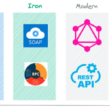
People often don’t understand how the Internet of Things (IoT) differs from the standard internet. The most significant difference is that IoT does not require data entry. As with traditional, the only data that is at risk is the one you post. A simple solution – do not put data on the Internet and your problem is solved. But IoT information is fully collected separately.
“Smart” technologies, as we call them, analyse data on their own, so you never really know what you’re posting on the Internet. For some people, this is a brand new market. However, it also creates a new market for hackers, and the market is growing independently. IoT analytics predicts that by 2025, around 41 billion IoT devices will be online.
To explain what the risk may be with IoT, let’s talk about smart homes. Your home’s temperature, lighting, alarms, doors and phones are connected to Wi-Fi. If a hacker gets into your Wi-Fi network, he could access almost everything. A thief can open the door of your garage and enter directly into your house, even without an alarm. This means that your house, even with the huge amount of money you spent on security, could be stolen without you being aware of it at all. Some companies and cybersecurity organizations are working on protecting IoT devices. But how can you protect such a centralized system, if a leak even on one device can put your entire system at risk? Hewlett Packard’s research shows that nearly 70% of all IoT devices have potential vulnerabilities. This is a cause for concern.
Are people afraid of IoT?
According to Business Insider Intelligence Survey, 39% of the public claimed that the only reason they don’t use IoT systems is because they fear cyber threats. With IoT, it is expected that hackers can transform from virtual threats and become more dangerous physical threats. Forbes has already said that most devices can spy on people in their own homes using cameras installed on thermostats, televisions and security cameras.
What is the current situation with IoT?
It is becoming increasingly clear that hackers know how to get into IoT devices. Of course, some improvements are being made to ensure interconnected networks, but not only security measures are developing. Hackers know where the data is flowing and they want to get it. IoT Devices do not have processing capabilities like our phones and computers and this creates problems for security companies. It is impossible to hope that you will install the antivirus on the thermostat. Their performance capabilities are too low to add technical security software.
Currently, the best way to protect your smart home is to use technology and advice from security companies, as well as network security products. This includes security training for families, secure routers, and a hub to protect all incoming network traffic with the help of security companies. According to Wikipedia, by 2027, the market for IoT security products will total $26 billion.
In September 2015, a company called Internet of Things Security Foundation (IoTSF) was established, whose main mission is to increase IoT security. The board of directors of companies includes people from Vodafone, Imagination Technologies, BT and Pen Test Partners. Also, large IT companies are working independently to develop IoT security methods. So, just like IoT devices growing as an industry, their security is becoming a completely separate niche.
What can we expect from IoT security in the near future?
Since all the time and money is invested to find a solution to this problem, it is safe to say that the security of IoT devices will be at the heart of the future. It is expected that by 2025 security will be enough for daily use, but this does not mean that the devices will be completely invulnerable. People have also broken into the Pentagon. Certain hackers will still be able to penetrate these devices. However ,hopefully they won’t be as easy to hack as they are now.
Concluding Thoughts
Right now, we recommend using the tip before you start using IoT devices. Even stalkers could enter the chambers of your house, because your refrigerator was unsafe and looked at your whole family without restrictions. A hacker could drive your car without your permission. Given all this, we do not believe that comfort and modernity are worth all these problems. We do not ask you to completely refrain from using IoT devices. When using, for example, a microwave and things like that, it’s important to be aware that these things can become a danger to you or your family.





![how-to-write-a-group-product-manager-resume-[+-examples]](https://prodsens.live/wp-content/uploads/2022/10/4509-how-to-write-a-group-product-manager-resume-examples-380x250.jpg)